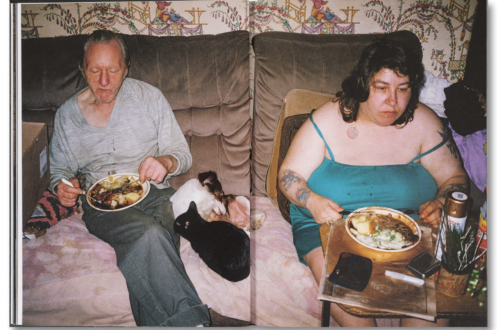Mobile Photography/Art – Saturday Poetry – ‘The Moon and The Yew Tree’ by Sylvia Plath
I am introducing a new section, simply titled, Saturday Poetry. Each Saturday I will publish a poem and I will also try to link a mobile photography image, that has been uploaded to our Instagram hashtag #theappwhisperer during the week.
As it is Halloween weekend my thoughts turned to the Yew Tree (Taxus baccata), also known as ‘the tree of the dead’. It is commonly found in churchyards throughout the United Kingdom, France and Spain. Some, it has been said have stood for between 1,300 and 3,000 years. At least 250 yews today are as old or older than the churchyards in which they stand.
It is “beneath the yew-tree’s shade” that “heaves the turf in many a mouldering heap,” as Thomas Gray’s “Elegy Written in a Country Churchyard” puts it. Taxus baccata almost invariably casts its shadow where the dead are, on the south and west sides of the church. Like the bodies it watches over, it is rarely found on the north side, and then only in exceptional circumstances.
I thought it would be appropriate to republish Sylvia Plath’s ‘The Moon and The Yew Tree’ poem today. In many ways this poem, pointedly the verse describing the yew tree, leaves us with an ominous feeling, almost a form of foreboding. She almost describes it or perhaps it’s deliberate as a phallic shape, a symbol of maleness.
Surprisingly for Halloween there’s an absence of churchyard, yew and even moon images uploaded to our Instagram group. In view of this, I have selected @sm2azimi’s image below to match with this poem. Although not featuring yew trees, I feel it captures some of the other elements of this poem.

The Moon and The Yew Tree – Sylvia Plath
This is the light of the mind, cold and planetary
The trees of the mind are black. The light is blue.
The grasses unload their griefs on my feet as if I were God
Prickling my ankles and murmuring of their humility
Fumy, spiritous mists inhabit this place.
Separated from my house by a row of headstones.
I simply cannot see where there is to get to.
The moon is no door. It is a face in its own right,
White as a knuckle and terribly upset.
It drags the sea after it like a dark crime; it is quiet
With the O-gape of complete despair. I live here.
Twice on Sunday, the bells startle the sky —
Eight great tongues affirming the Resurrection
At the end, they soberly bong out their names.
The yew tree points up, it has a Gothic shape.
The eyes lift after it and find the moon.
The moon is my mother. She is not sweet like Mary.
Her blue garments unloose small bats and owls.
How I would like to believe in tenderness –
The face of the effigy, gentled by candles,
Bending, on me in particular, its mild eyes.
I have fallen a long way. Clouds are flowering
Blue and mystical over the face of the stars
Inside the church, the saints will all be blue,
Floating on their delicate feet over the cold pews,
Their hands and faces stiff with holiness.
The moon sees nothing of this. She is bald and wild.
And the message of the yew tree is blackness – blackness and silence.


